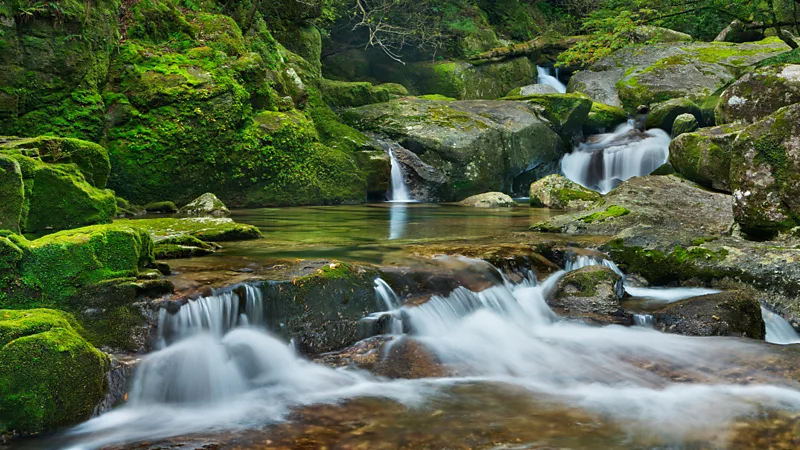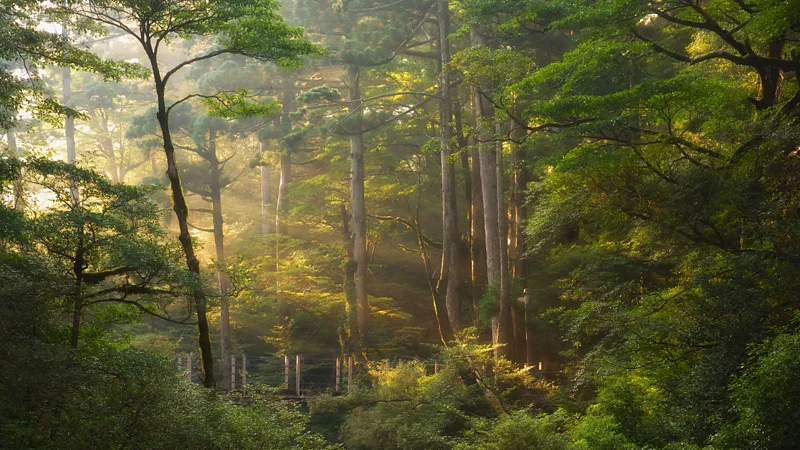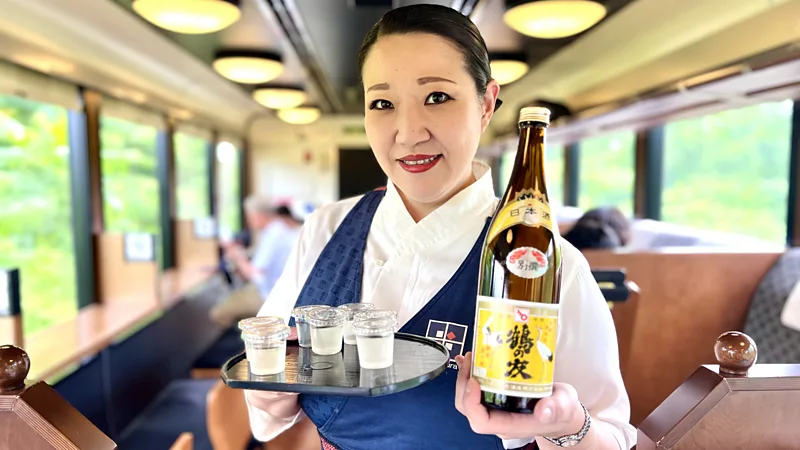The Japanese landscapes that inspired Studio Ghibli are more than just beautiful backdrops — they are living, breathing places that capture the very soul of Hayao Miyazaki’s creations. As Studio Ghibli celebrates its 40th anniversary, fans around the globe are rediscovering the real-life forests, hot springs, and villages that shaped some of the most iconic animated films of all time.
From the misty cedar forests of Yakushima that brought Princess Mononoke to life, to the charming Sayama Hills that inspired My Neighbor Totoro, and the centuries-old bathhouse of Dōgo Onsen that became the model for Spirited Away, these locations continue to attract travelers who want to step into a Ghibli scene.
Yakushima: The Sacred Forests Behind Princess Mononoke
One of the most iconic Japanese landscapes that inspired Studio Ghibli is Yakushima, a lush, rain-drenched island off southern Kyushu. This UNESCO World Heritage site is believed to be the real-world setting that inspired the mystical forest of Princess Mononoke.
Home to cedar trees that are over a thousand years old, Yakushima feels like a world out of time. Thick moss carpets the forest floor, mist shrouds the mountaintops, and rain falls nearly every day, giving the island its otherworldly charm. Local guides say the dense greenery and ancient atmosphere make visitors feel as though they are walking into a living Ghibli painting.

But Yakushima’s enchanted forests are under threat. Climate change, deer overgrazing, and landslides have started to damage this fragile ecosystem. Conservation groups and local authorities are working hard to restore the environment, limit human impact, and protect the old-growth cedar trees so that future generations can still experience the magic that inspired Miyazaki’s masterpiece.
Dōgo Onsen: The Bathhouse of Spirited Away
No list of Japanese landscapes that inspired Studio Ghibli would be complete without mentioning Dōgo Onsen, one of Japan’s oldest hot springs. Located in Matsuyama, Ehime Prefecture, this 3,000-year-old bathhouse is believed to have inspired the fantastical Aburaya bathhouse in the Oscar-winning Spirited Away.
With its wooden corridors, pagoda-style roofs, and watchtower, Dōgo Onsen Honkan looks like it could house Yubaba herself. Although Studio Ghibli has never officially confirmed the connection, fans immediately recognize the similarities when they visit.
Following a multi-year restoration project completed in 2024, Dōgo Onsen has been preserved as an Important Cultural Property of Japan. Today, it welcomes bathers, tourists, and Ghibli fans from around the world who come to soak in its steaming waters and experience a piece of animation history.
Sayama Hills: The Forest of Totoro
Perhaps the most beloved of all Japanese landscapes that inspired Studio Ghibli is the Sayama Hills, affectionately known as “Totoro’s Forest.” This 3,500-hectare area, straddling Tokyo and Saitama Prefectures, was the inspiration for the lush, countryside setting of My Neighbor Totoro.
The hills are a patchwork of rice fields, streams, camphor trees, and narrow trails that perfectly capture the rural life that shaped Miyazaki’s childhood. Many visitors say that wandering through Sayama Hills feels like stepping straight into the scenes where Mei and Satsuki first meet Totoro.
The Totoro no Furusato Foundation, supported by Miyazaki himself, has spent decades preserving these woods and preventing suburban development from swallowing them up. Volunteers help with clearing paths, pruning trees, and running educational programs to teach visitors about conservation. At Kurosuke’s House — a 120-year-old farmhouse turned museum — visitors can see life-sized Totoro figures, soot sprite recreations, and traditional Japanese interiors that echo scenes from the film.
Why These Japanese Landscapes Matter
These Japanese landscapes that inspired Studio Ghibli are more than tourist destinations — they are cultural treasures. They connect fans to the deeper themes that Studio Ghibli films explore: respect for nature, harmony with the environment, and the beauty of everyday life.
For travelers, visiting these locations can be a transformative experience. Standing in Yakushima’s misty forests, soaking at Dōgo Onsen, or walking through Sayama Hills gives fans a sense of stepping into a world where nature and magic coexist.
But with increased popularity comes the challenge of sustainable tourism. Local governments and conservation groups are working to balance accessibility with preservation, ensuring that these landscapes remain unspoiled for future dreamers and storytellers.
Planning Your Ghibli Pilgrimage
If you’re inspired to explore the Japanese landscapes that inspired Studio Ghibli, here are some tips:
- Yakushima: Book guided eco-tours to minimize environmental impact.
- Dōgo Onsen: Visit early in the morning or late evening to avoid crowds.
- Sayama Hills: Join volunteer activities with the Totoro no Furusato Foundation to support conservation.
These destinations allow you to not just witness but actively contribute to preserving the worlds that have inspired generations of Ghibli fans.
Source:
BBC Travel


